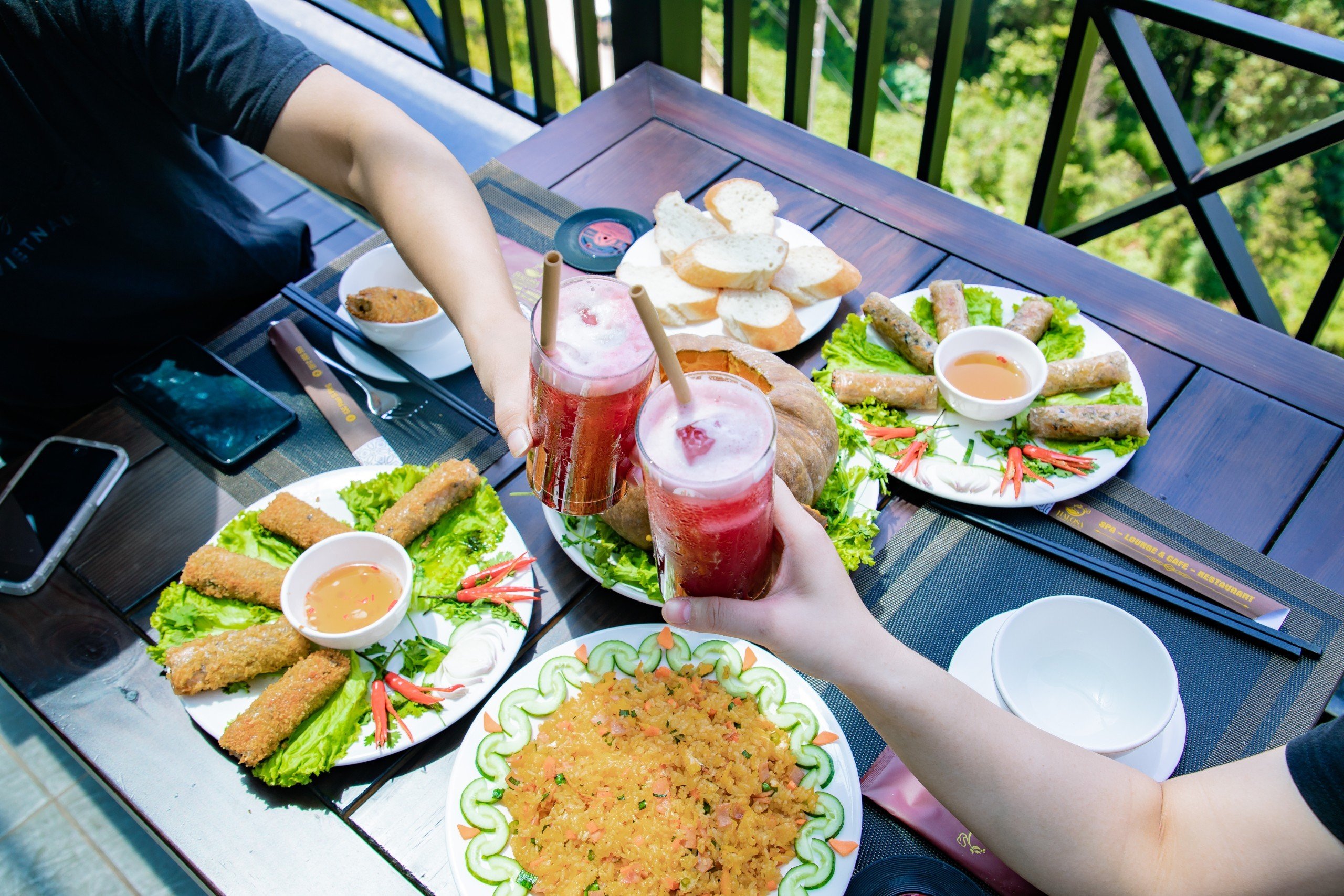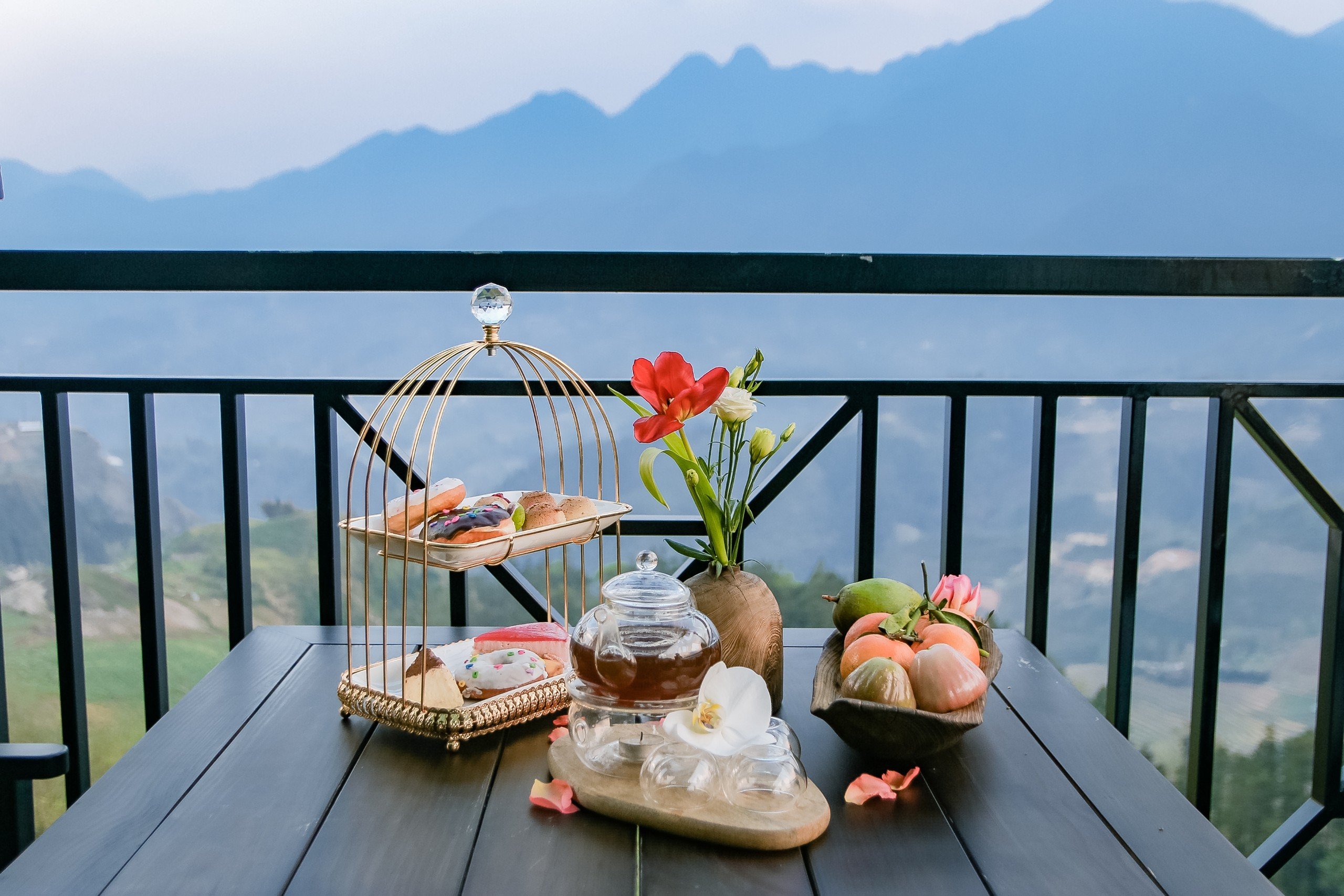10 Sapa specialties that make visitors forget the way home
Date29-03-2023There is more than one reason why Sapa has become a top destination for travel enthusiasts. Sapa specialties are so fancy, strange and delicious that they can make visitors forget the way back. There are delicious Sapa dishes that just hearing the name makes the stomach “burning” with craving; There are also some names that look scary at first, but are extremely “addictive”. If you have the opportunity to travel on your own to this land of sunshine, flowers and dew, don’t forget to enjoy all 10 famous Sapa specialties below.
1.”Thắng cố” in Sapa:
Strolling around the love market and the fair in Sapa, tourists can easily find a unique local dish with a quite peculiar name – “thắng cố”. Simply put, “thắng cố” is a soup made from beef, buffalo meat, horse organs, simmered bones, fresh vegetables, and various special spices – similar to the beef organ hotpot or pork organ hotpot in Southern Vietnam. This is actually a traditional delicious dish of the H’mong people, imported from Yunnan province, China and has a history of nearly 200 years. “Thắng cố” is often cooked in a large pot, with a dark color, fatty and a bitter-sweet taste of the horse bile – perfectly suited for the cold weather in Sapa. The locals often joke that if someone has been to Sapa but hasn’t tasted “thắng cố”, they haven’t truly been to Sapa.

2. Sapa’s smoked buffalo meat:
Smoked buffalo meat is not only a famous specialty of Sapa but also a popular gift that many tourists buy for their friends and family. Fresh buffalo meat is marinated with spices and then smoked over a wood stove until the outer layer becomes completely dry and turns into a dark red-brown color. This is one of the specialties of the Black Thai ethnic group, possessing a salty and pungent aroma that comes from various types of spices. Although it may be quite picky for some eaters, Sapa’s smoked buffalo meat is greatly appreciated by gourmets due to its rich and savory flavor, which is said to go well with alcoholic drinks. People often steam or boil the meat and serve it with a dipping sauce. Alternatively, you can also grill the smoked meat and serve it with a little sour lemon juice. The taste is undeniably rich and unforgettable.

3. Stolen armpit pork:
Stolen armpit pork is made from free-range pigs of the Mong ethnic group, which are typically small in size, weighing only around 5-6kg each. During the weekly market, people often “steal the armpit” of these pigs to sell. That’s where the unique and charming name of this dish comes from. When it comes to the taste of Sapa’s stolen armpit pork, four words are enough to describe it: “small but with a shell.” Due to their constant movement and exercise, the pork is very tender and firm, with alternating layers of meat and fat, and it is best when grilled over charcoal until the skin is crispy and golden brown. Roasting it next to a fire and enjoying it with some fermented apple wine is the delightful pleasure of the local people.

4. Lam Rice:
Famous for its image of green terraced rice fields stretching from high mountain passes, it’s not surprising that Lam rice is on the list of Sapa’s famous specialties. Lam rice is simply rice roasted inside bamboo tubes over a charcoal fire. During the cooking process, the bamboo tubes must be regularly rotated so that the rice inside can be evenly cooked. Thanks to this special method, the rice grains absorb all the sweet aroma from the bamboo while still maintaining their delicious taste. Lam rice is both chewy and soft even when it’s cold, similar to sticky rice. You can eat Lam rice with roasted sesame salt or with sausage, grilled meat, and other dishes that taste great.

5. Rainbow trout:
You’re probably mistaken if you believe that salmon is a specialty of the ocean and islands. Trout, commonly referred to as rainbow trout or sapa salmon, typically lives in cold, stagnant water. The red-orange rainbow trout is particularly appealing; it has firm, regularly spaced fibers that are tender and fatty without being oily. Rainbow trout is wonderful whether it’s prepared as sashimi (raw fish dipped in mustard), in a salad, with pepper, or on the grill. Salmon hot pot is one of Sapa’s delectable cuisines that is highly favored by tourists. Superb fresh salmon meat combined with a sweet and sour broth is dipped in a hot pot with various fresh veggies from the Pacific Northwest.

6.Seven-color sticky rice:
Seven-color sticky rice is a traditional Sapa delicacy that often appears during Tet holidays or the 1st of July of the lunar calendar every year. The seven sticky colors including bright red, dark red, brown, purple, yellow, blue and green represent seven consecutive months of long-term resistance of the Nung Din ethnic people, in order to honor the glorious victories and gratitude. heroes who fell in the war against the invaders. Seven-color sticky rice must be delicious sticky rice with round, long, and fine grains. Although it looks colorful, the color of sticky rice is completely taken from natural ingredients such as yellow flower tree, sticky rice leaves, kitchen ash or flower sticky rice leaves…. Thanks to that, each color of sticky rice will have a very characteristic natural aroma and delicious taste, even though it is simple but not blurred in the diverse and colorful Sapa cuisine.

7.Northwest vegetables:
The vegetables here are not only quite large, stocky, fresh, but also extremely rich in nutrients. Whether used to make soup, dipping hot pot, vegetarian stir-fry or stewing meat, it is enough to satisfy even the most demanding diners. You don’t have to worry about gaining weight after a trip. Northwest vegetables are sold at most markets, restaurants or at eateries in Sapa with extremely “cheapest” prices.

8. Grilled stream fish:
The stream fish in Sapa are little, around the size of a hand or a knife handle, and they frequently reside in schools. Natural fish meat, in contrast, is tender, firm, and completely fish-free. The most energizing food to “bombard” Sapa’s culinary map is capturing and cooking stream fish directly next to the stream. Enjoy some excellent grilled fish while taking a deep breath of the crisp, clean air, listening to the sound of running water, and warming yourself with some Northwest San Lung wine. This is a unique opportunity to experience freedom and freedom in the world. If you don’t have time to go fishing, Sapa eateries provide delectable stream fish. Stream fish can also be barbecued or crisp-fried.

9. Sapa Black Chicken:
Black chicken is another name for the evil chicken, which is raised by many H’Mong families to graze in the garden. The defining feature of this chicken is its jet-black color from feathers, meat to bones. Black chickens are quite small in stature, each weighing only about 200g – 300g. This is a delicious dish and a well-known remedy handed down in folklore, often used to treat many diseases such as spleen damage, loss of appetite, menstrual disorders, heat in the body or bone pain… or nutritional supplements for the elderly and those who have just woken up. In Sapa, people most like to eat grilled black chicken with honey. The chicken skin is tough, the chicken is tender and flavorful, served with salt, pepper, lemon, or mint leaves will surely bring you a memorable culinary experience in the land of fog.

10. Cat cider:
The main ingredient to make premium Sapa apple cider is the meo apple (also known as medlar fruit) growing in the northern mountains. Embracing the spirit of the mountains and forests, wild apples have a unique, unique and bitter taste, when soaked in wine, they will create their own scent and yellow cockroach wings. It is not an exaggeration to say that every dish in Sapa becomes a masterpiece if enjoyed with a glass of apple cider. Even in the first sip of wine, all your senses seem to be awakened by the pungent and pungent aroma, followed by the lingering sweetness at the tip of the tongue. Apple cider vinegar is also used to treat headaches, dizziness, sedation, and sleep, so it is often bought by tourists to give to relatives and friends.
Via: sonata.vn
Visit Halosa at:
Fanpage: https://www.facebook.com/halosasapa/
Instagram: https://instagram.com/halosavn
Hotline: 091286 9989











